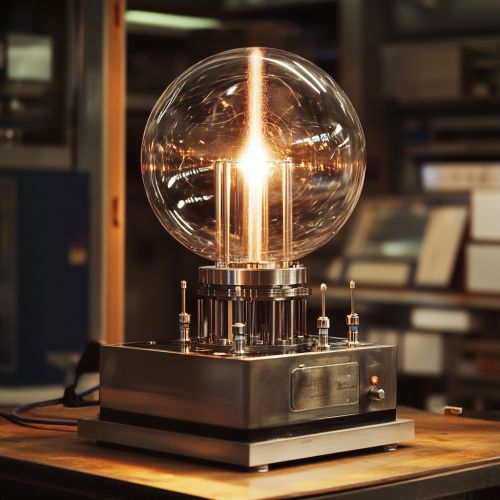Robert J. Van de Graaff
Early Life and Education
Robert Jemison Van de Graaff was born on December 20, 1901, in Tuscaloosa, Alabama, USA. He was the youngest of six children in a family with a strong academic background. His father, Adrian Sebastian Van de Graaff, was a prominent attorney, and his mother, Minnie Cherokee Jemison, was a well-educated homemaker. Van de Graaff's early education was influenced by his family's intellectual environment, which fostered his interest in science and engineering.
Van de Graaff attended the University of Alabama, where he earned his Bachelor of Science degree in Mechanical Engineering in 1922. He then pursued graduate studies at the Sorbonne in Paris, France, where he was exposed to the burgeoning field of atomic physics. This experience significantly shaped his future research interests.
Development of the Van de Graaff Generator
Upon returning to the United States, Van de Graaff enrolled at the Massachusetts Institute of Technology (MIT) to continue his studies in physics. It was during this time that he conceived the idea of the Van de Graaff generator, a device capable of producing high voltages using electrostatic principles. The generator was designed to accelerate particles for nuclear physics experiments, a field that was rapidly evolving in the early 20th century.
The Van de Graaff generator operates by transferring electric charge to a hollow metal sphere using a moving belt. The belt, typically made of rubber or silk, carries charge from a grounded source to the sphere, where it accumulates, creating a high electric potential. This potential can reach millions of volts, making the generator an essential tool for early particle accelerators.


Career and Contributions
Van de Graaff's work on the generator led to significant advancements in the field of particle physics. In 1931, he demonstrated a working model of the generator at the American Physical Society meeting, which garnered widespread attention and support. This success led to his appointment as a research associate at MIT, where he continued to refine and improve the generator's design.
In 1933, Van de Graaff joined the faculty of Princeton University, where he collaborated with other prominent physicists, including Ernest Rutherford and Niels Bohr. His work at Princeton focused on using the Van de Graaff generator for nuclear research, particularly in the study of atomic nuclei and the forces that hold them together.
Van de Graaff's contributions to science extended beyond the development of his eponymous generator. He was also involved in the design and construction of the first cyclotron, a type of particle accelerator that uses a magnetic field to accelerate charged particles along a spiral path. His expertise in high-voltage engineering was instrumental in the success of these early accelerators.
Later Life and Legacy
In the 1940s, Van de Graaff co-founded the High Voltage Engineering Corporation (HVEC) with John G. Trump, an electrical engineer and the uncle of future U.S. President Donald Trump. HVEC specialized in the development and commercialization of high-voltage equipment, including Van de Graaff generators, for scientific and industrial applications.
Van de Graaff continued to work on high-voltage technology throughout his career, contributing to advancements in radiation therapy for cancer treatment and the development of X-ray machines. His work had a lasting impact on both scientific research and practical applications in medicine and industry.
Robert J. Van de Graaff passed away on January 16, 1967, in Boston, Massachusetts. His legacy lives on through the continued use of Van de Graaff generators in educational settings and research laboratories worldwide. The generator remains a symbol of his ingenuity and dedication to advancing scientific knowledge.
